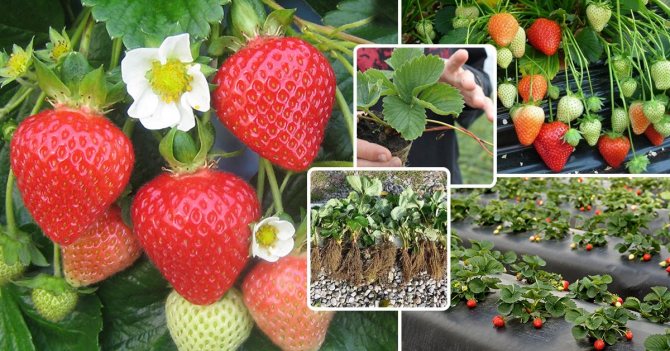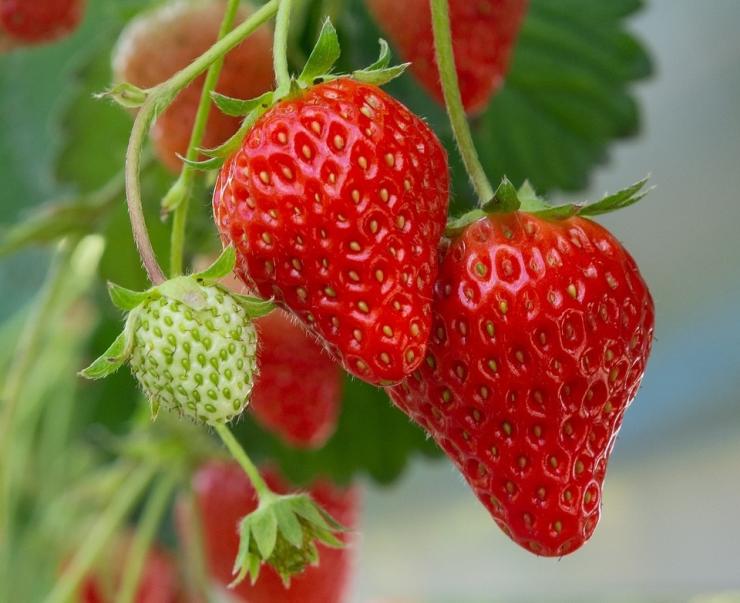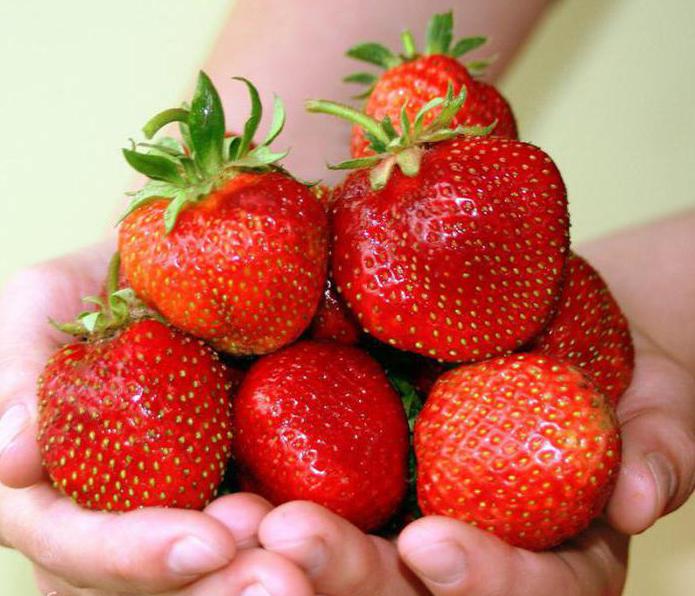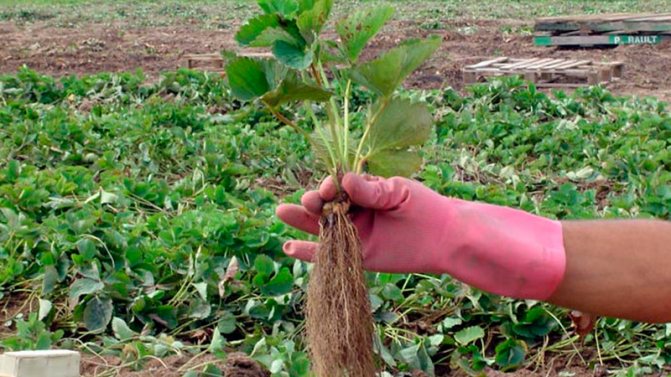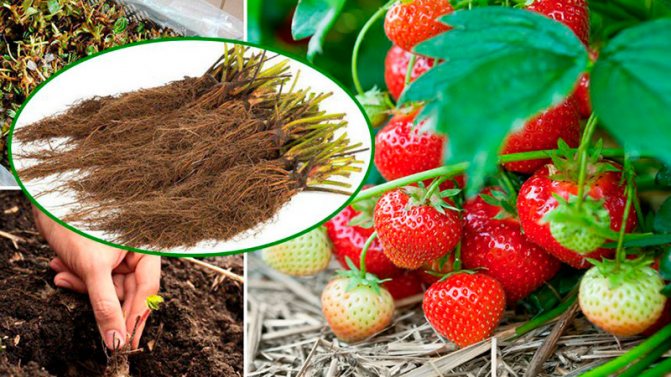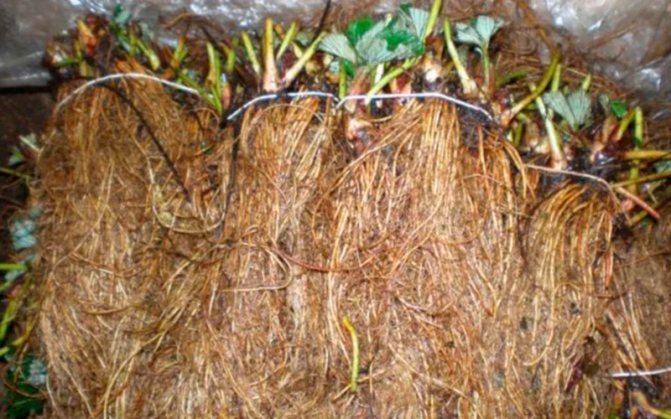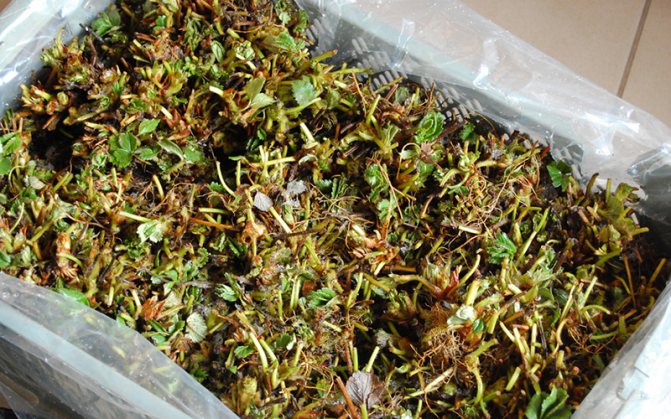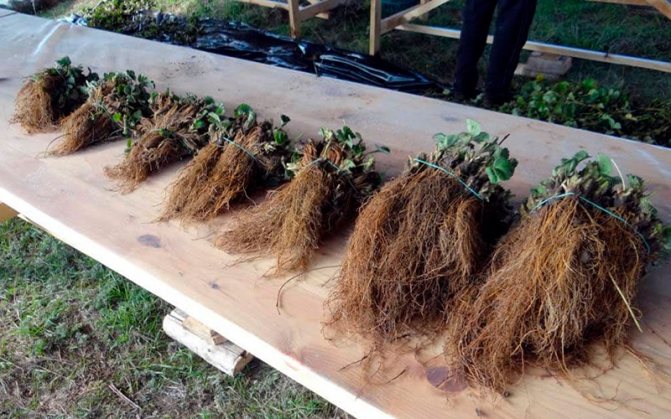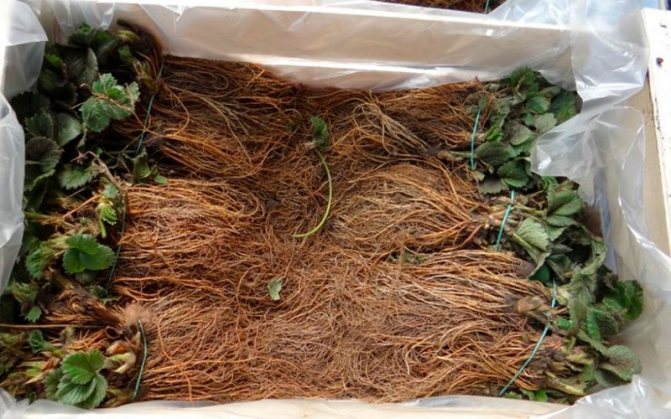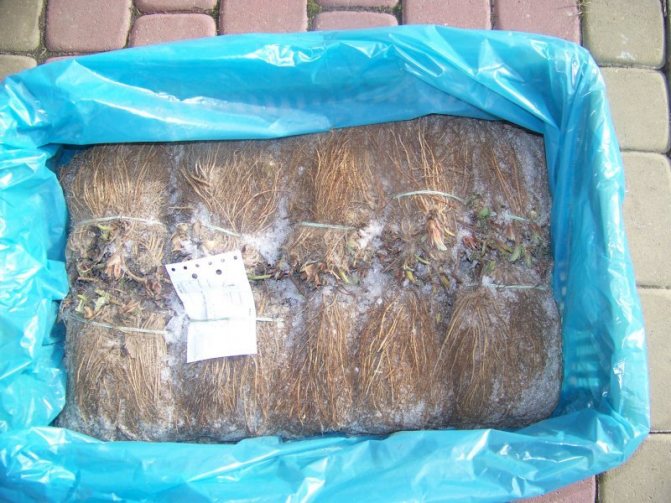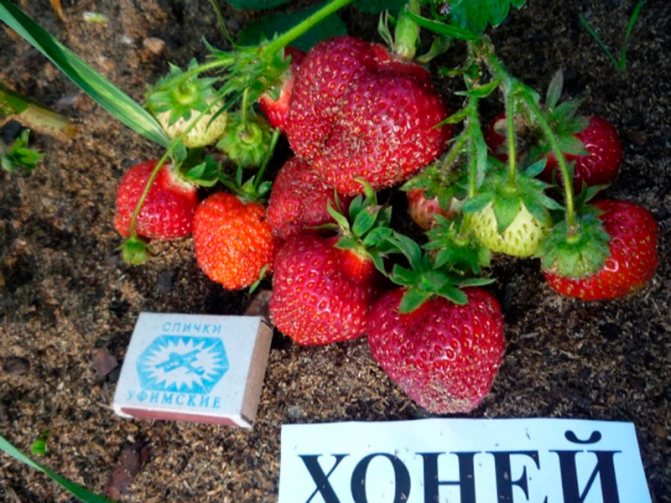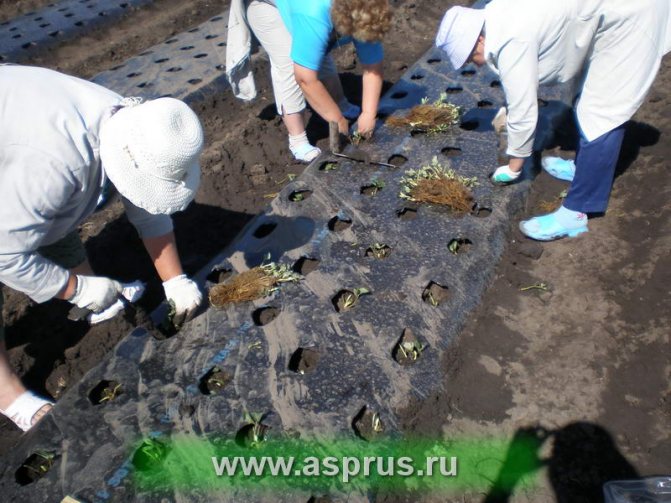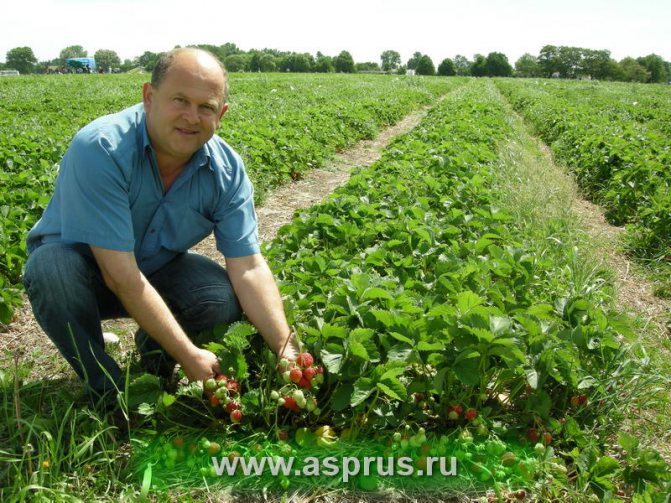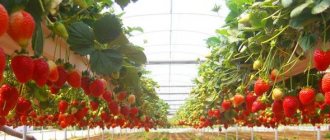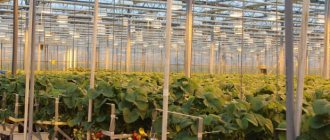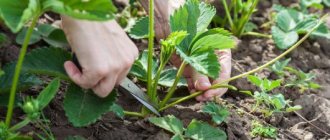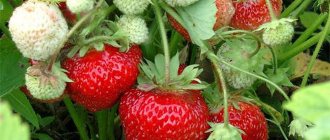Home / Garden / Berries
Back to
Published: 26.12.2019
Reading time: 9 minutes
0
45
Despite the large amount of information about garden frigo strawberry seedlings, popular in Europe, for many summer residents the essence of the method and its effectiveness remain unclear. Not everyone understands what it is, confusing technology with the name of a strawberry variety, skeptical about the announced results and yield indicators.
Meanwhile, the technology of growing frigo has been positively evaluated and adopted by large farms in Europe and in a number of regions of Russia. Gradually, domestic summer residents who grow berries for sale begin to use it.
- 1 Frigo technology: description, features
- 2 Classification of seedlings
- 3 Features of planting strawberries frigo
- 4 Crop care
- 5 Advantages and disadvantages of frigo technology
What is Frigo Strawberry?
The description should start by mentioning that Frigo is not the name of the berry. And technologies for special preparation of planting material for plants of certain varieties. The technique consists in the fact that uterine bushes of high yields are planted in light soils, for example, sand. When fertilizing with this method, it is important to prevent the plant from blooming. It is necessary to create conditions under which the efforts of the variety will be directed not at flowering, but at reproduction.
The seedlings must separate, after which they must be well fed. Usually the ripening period occurs at the end of October. Frigo makes the process clear through the foliage, which becomes brown in color, and the roots become brown in a uniform tone. White root ends are considered a normal manifestation of maturity.
Further, the seedlings of Frigo strawberries are dug up, moved to a cool place, shaken off the ground. It is important not to prune or wash an already mature plant. Next, on the Frigo bushes, you need to remove all the leaves. Leaving a couple of young options. Further. Frigo needs to be treated with fungicides. The Frigo strawberries must then be sorted by size and stored in bundles.
Important! Frigo strawberry seedlings must be stored under strictly defined conditions. They should be stored in plastic bags. Premises - refrigerating chambers, the temperature of which is up to -2 degrees. The moisture level in the refrigerator should not exceed 90%.
If all the above conditions are observed, then the variety is stored without compromising quality for about 2 weeks, which is very important for strawberries. If the yield is not so important, the shelf life is increased to 4 years or more.
Traditional technology of harvesting strawberry seedlings
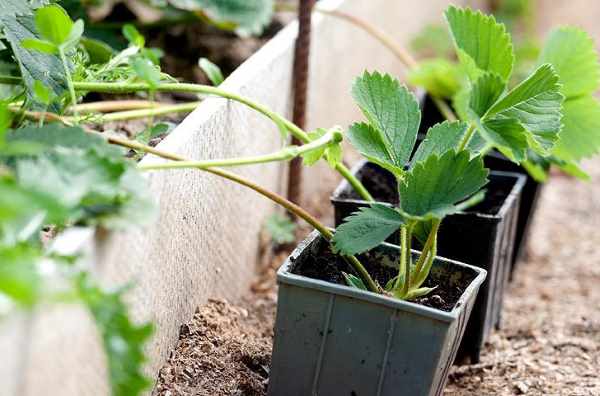
Freshly dug strawberry seedlings are planted in spring (April-May) or autumn (late August-September), laying strawberry plantations.
Read the article:
Propagation of strawberries with a mustache
Preference is given to autumn planting due to high humidity. Strawberry seedlings are planted in the fall as early as possible - for their rooting in a new place. A lot of energy is spent on the formation of the root system, and the formation of generative buds is reduced, so it is not always possible to get a good harvest next year.
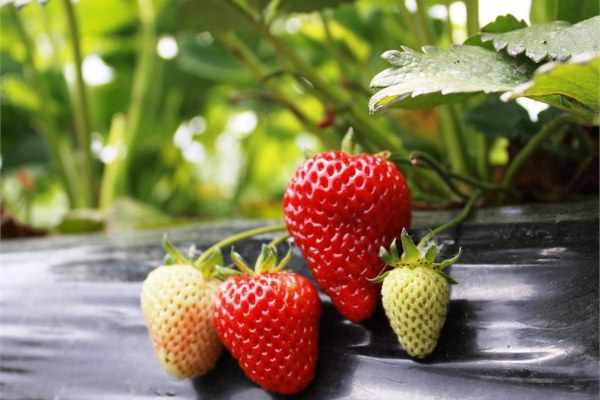

The spring transplant is directly related to weather conditions. In the spring, when planting strawberries, it is watered abundantly.
Plants are planted with a well-developed root system and a large number of generative buds. The stress caused by transplanting and the lack of moisture leads to a decrease in the strawberry yield in the year of planting.
The disadvantage when planting seedlings in the spring is a limited period of time, there are many other works during this period in the garden.
Video - WHAT IS FRIGO SEEDLING STRAWBERRY
Division by classes and varieties
The variety, as you might guess, is not the name of the plant, but only the type of planting. Which has its own divisions into classes and varieties. In Europe, there are 4 classes of berries, the cost of a berry will depend, first of all, on it:
- The class is characterized by a neck diameter of 8-12 mm, and there are 2 peduncles per bush. This class bears fruit for 2 years after planting strawberries;
- there is A-class Frigo, in which the neck diameter of strawberries is 13 mm, there are 2 peduncles on the plant. If you follow the norms of agricultural technology, then you can get up to 20 kg with this planting technology;
- there is another type of A +, in which the dimensions of the neck are 15-18 mm. The class is distinguished by the presence of 3 or more peduncles, depending on the care and initial conditions. With the best quality care, you can get 40 berries from one Frigo bush;
- the view has another class, which is written with the abbreviation WB. The variety is characterized by a wide neck diameter up to 22 mm and above. Differs in the presence of 5 peduncles. And from a shrub of the variety, you can collect up to 450 fruits.
It is logical to assume that the Frigo WB and A + classes are valuable for commercial purposes. If the berry is grown for personal consumption, then class B berries may also work.
Gardeners reviews
Gardeners and farm owners who plant frigo strawberries celebrate the pros and cons.
The advantages of technology include:
- the ability to harvest the whole year, even out of season;
- quick ripening of fruits after planting;
- ability to resist disease;
- high yields of high-class seedlings;
- young plants take root well and quickly.
Among the minuses are noted:
- high price of seedlings;
- the difficulty in creating conditions for storing seedlings, the need for a certain regime, the use of expensive equipment;
- the early maturity of strawberries grown using this method is possible only in the first year after planting, then the strawberry becomes common.
Frigo is a unique technology that has been largely mastered by large farms for growing strawberry harvests for sale. But the positive aspects of using the technology are gradually introducing it into small gardening for personal use.
Variety preservation tips


The question of how to plant and care for a berry variety may seem clear enough. However, this technology requires certain methods of storing the variety. If the planting material is packed in sphangum moss, then such storage will exclude the appearance of rot. In this type of storage, the variety can be preserved in its original quality for up to 3 weeks of transportation.
If the strawberry variety is purchased from specialized stores, it must be carefully inspected. With dormant bushes, you can continue storage in the refrigerator. The Frigo planting time is formed when the first leaves begin to form on the bush.
Advantages and disadvantages of the technique
Frigo strawberries have a number of undeniable advantages, but they also have disadvantages. The obvious advantages of such seedlings include:
- continuous growing of berries throughout the year;
- compactness of planting material;
- excellent survival rate;
- high productivity.
Growing strawberries "frigo" also has disadvantages:
- high price (from 15 rubles per piece);
- expensive equipment for storing seedlings;
- the difficulties of growing in the northern regions.
Strawberry planting rules
In the case when the planting season has started, you can plant the Frigo variety in the beds. If the season has not yet arrived, strawberries can also be planted in greenhouse conditions.Also Frigo is adapted for planting in pots. If planting takes place in an urban setting, then volumetric pots with a diameter of up to 500 ml can be used. After the summer season comes, you can plant the berry in a permanent place.
Before planting, the roots of Frigo strawberries must be cut by about 20 cm. Next, they must be straightened and lowered into the ground so that the root system is evenly distributed over the soil. After the planting process, the soil around the strawberries should be compacted. It is highly undesirable to completely cover the outlet with earth.
Growing and harvesting seedlings
To get seedlings, mother bushes are planted in sandy loam and sandy soil in tunnel shelters or in open beds. The peduncles that form on them are removed so that the plant directs all its forces to the formation of offspring. During the growth of the plant, young bushes are actively fed. As soon as the strawberry seedlings enter the resting phase, they are dug out.
The readiness of the rosettes is usually checked by the rhizome - it becomes uniformly brown with light tips. Another indicator of "hibernation" is the leaves - they darken and acquire a brownish tint. This usually occurs in November, when the temperature settles between 0 and -3 ° C. Previously, the plant should not be disturbed, since in this case the planting material will die during storage.
The dug out young plant is transferred to a cool room in which the temperature is maintained from +8 to + 12 ° C. The roots are well shaken off the remnants of the soil (do not wash!), And it is also strictly forbidden to cut them off. Then remove all large leaves, leaving only the youngest leaves at the point of growth.
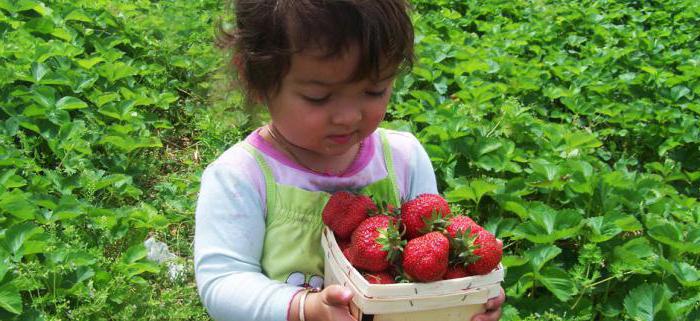

To avoid the appearance of rot, prepared “frigo” strawberry seedlings are treated with fungicides - “Vincit Forte”, “Fundazol”, “Hom”, “Topaz”. After that, they are sorted by the size of the root collar, and by varieties, and then tied into dense bundles, as a rule, 50-100 pieces.
Tips for choosing soil for strawberries
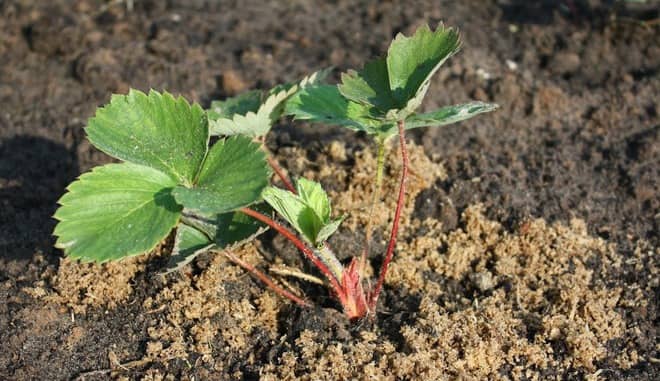

This planting method requires soil with special nutritional value. Soil harvesting must begin in the fall. The calculation of the soil composition is taken at the rate of 1 m2. You will need to add 11 kg of rotted manure, potash salt in the amount of 30 grams. You will also need 65 g of superphosphate. It is better to plant the berry in rather high ridges in 2 rows. Then mulch with straw.
Having dealt with Frigo strawberries and what they are, you can consider the advantages and disadvantages of the variety. There is a high yield and the possibility of getting it out of season. Also, gardeners note with this method the quality and safety of planting material. The disadvantage of this variety is that the seedlings are more expensive than a simple strawberry. The strawberry fruit rate is high only in the first year, and then it does not differ from other varieties with an increased cost of the main seedlings.
This material will help you learn how to properly plant strawberries using Frigo technology.
Preparing seedlings for planting
In open ground, these strawberries are planted in May-June. In the greenhouse - all year round. In order for the process of growing berries to be uninterrupted, this must be done at intervals of fifty to sixty days. Frigo strawberries are sold frozen, so they should be awakened before planting.
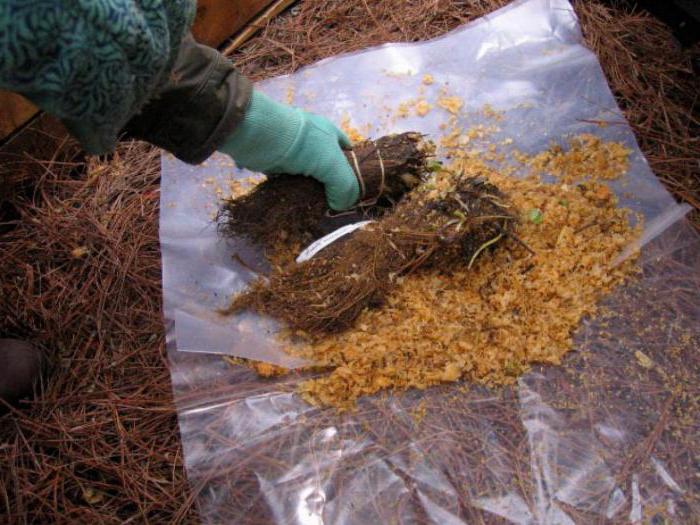

First, the seedlings must be thawed within 24 hours in a closed package, while too sharp a temperature drop should not be allowed so as not to cause a thermal shock of the planting material. To speed up defrosting, open the packaging and pour warm water on the seedlings. Remove the defrosted bushes from the packaging and place their roots in cold water for three hours. This will help replenish the moisture lost during the storage period.It is advisable to add a root system growth stimulator to the water - Getorauxin, Zircon, Kornevin.


Try not to let the solution get on the leaves, as this can lead to a slowdown in the development of the aerial part of the bush.
Classification
The strawberry growing technology called frigo has 4 groups that classify the plants that are used in this group.
Class A
- This is an extra class, the highest category.
- The most expensive planting material, but also the highest quality at the same time.
- Only elite varieties of strawberries are used for seedlings.
- Very high yield - 20 tons per hectare.
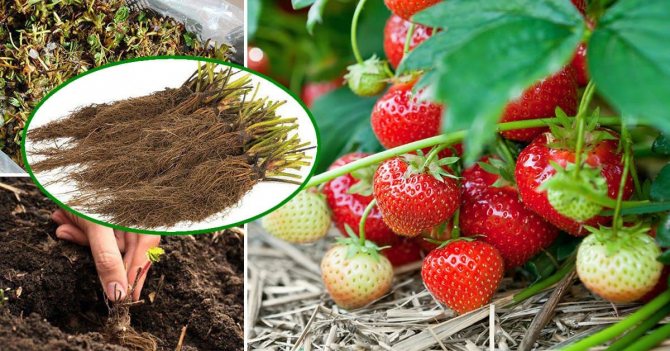

Class A +
- Also a very high category of plants.
- The peculiarity of this class is the surprisingly good preservation of strawberries after being in the refrigerator, even for a long time.
- The yield is lower - from 1 hectare - 10 tons of berries.
- Ideal for setting late harvests.
Class A-
- Strawberries in this group are great for small areas.
- Plants have a small number of peduncles, so the yield is noticeably lower - 4 tons per hectare.
Class B
In plants of this category, only one peduncle is formed. Harvests, respectively, are weak. Such strawberries begin to bear fruit only in the second year after planting.
Specificity of care
Berry crop care is standard, requiring timely watering, fertilizing and preventive treatments.
Watering
Seedlings grown and stored according to Dutch technology can easily tolerate high temperatures and short drought. Therefore, watering is carried out as needed.
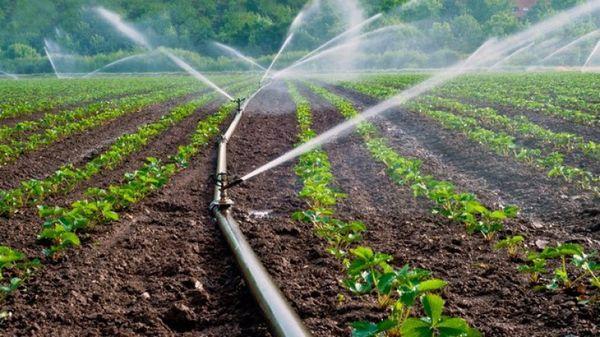

To reduce watering, the soil under the bushes is loosened and mulched.
Top dressing
To increase the yield of berries, strawberries are fed with minerals and organics. In the spring, when the plant is just entering the growth phase, the bushes are fertilized with organic matter containing nitrogen.
Before flowering and at the time of ovary formation, the fruit crop is fed with phosphorus and potassium. In autumn, both organic fertilizers and balanced mineral complexes are added to the soil.
Protection from diseases and pests
Before planting in open ground, it is recommended to treat strawberry seedlings with preparations based on fungicides. Also, in early spring, berry bushes are sprayed with insecticides and infusions prepared according to folk recipes.
Soil preparation
Berry culture has always been distinguished by its exactingness to the composition of the soil. Therefore, the bushes are planted in fertile, loose soil with a low acid and moisture content:
- Before planting, the soil is mixed with humus, organic matter and mineral complex fertilizers.
- The site is dug up, garbage and unwanted plants are removed, and thoroughly loosened.
- On the prepared soil, ridges are formed, 25-30 cm high, in which small holes or furrows are dug.
See also
6 best ways to save strawberries for the winter without cooking
To read
Important! The amount of fertilizers applied to the soil depends on the composition and fertility of the soil.
How to plant
In order for frigo strawberries to take root safely after prolonged cooling and give an excellent harvest, the soil in the garden must be prepared in advance in the fall. The site is dug up, organic fertilizers are applied:
- rotted manure - 10 kg per 1m2;
- potassium salt - 30 g per 1m2;
- superphosphate - 6 grams per 1m2.
In addition, siderates are sometimes planted, which both loosen the ground and feed it after mowing. The best option for poor humus and soil organic matter.
Frigo strawberries are usually planted in late spring or early summer. More specific terms largely depend on the weather conditions of the area. After 2 months, a second planting is carried out: a similar stepwise approach ensures an almost uninterrupted harvest.
Algorithm of actions
- Seedlings are removed from the cold room, they begin to awaken it.
- Polyethylene is opened and the strawberry bushes are poured with warm water. It is important, when performing this work, not to allow a sharp temperature drop.
- After complete defrosting, the bush is placed in chilled water for several hours in order to replenish the moisture deficit. Add a little growth stimulant to the water - Zircon, Epina.
- Before planting, the roots of the bushes are cut off.
- Seedlings are planted in the ground at a distance of 15-20 cm from each other. If space permits, it is recommended to leave 30 cm.
- The roots of the plants in the holes are straightened, the rosette is not added dropwise.
- After planting, the bushes are watered, the garden bed is mulched. It is convenient to use a black film with slots as mulch.
- During the next 10 days after planting, strawberries are irrigated daily. Then watering is done every 5 days, if there was no rain.
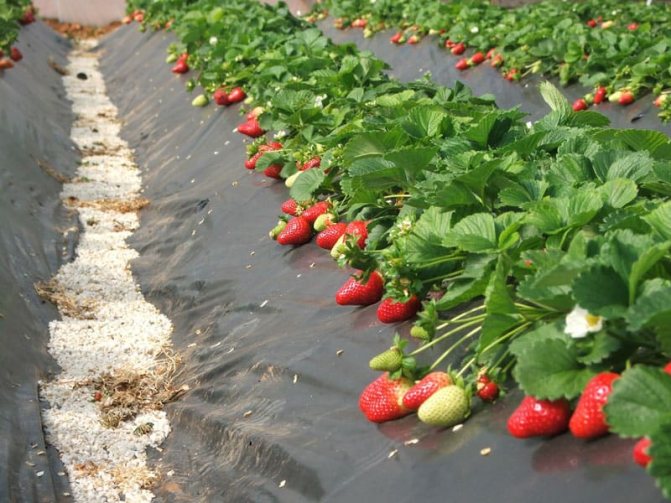

Important: within 15 minutes after the strawberry bushes have been pulled out of the water, they must be rooted. You can't hesitate, do the work quickly.
Advice
- the beds are made in the south-west direction;
- the surface of the strawberry field should be either straight or with a slight slope;
- landing is best done in the evening or in cloudy weather;
- before placing the seedlings in the holes, the garden is well watered.
You can learn more about the unique method from the video:
https://youtu.be/MxrodRMOtBM


